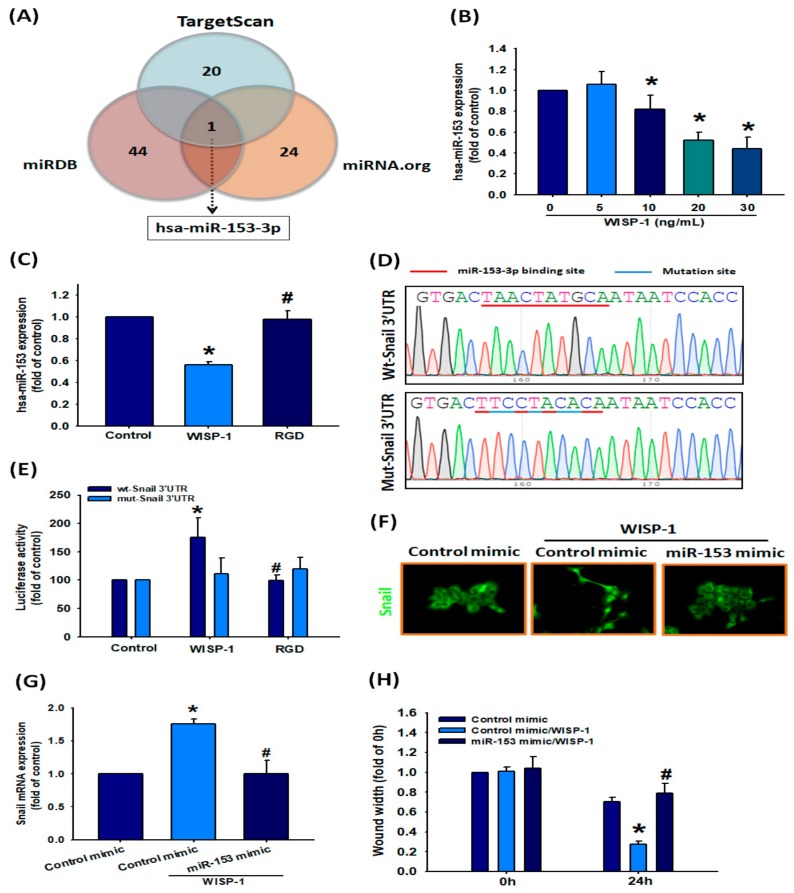Figure 7.
miR-153-3p inhibition is involved in WISP-1-induced EMT activation. (A) MiRNA target prediction program software was used to identify miRNAs that potentially bind to the Snail 3’-UTR. (B) After incubating cells with different concentrations of WISP-1 (0–30 ng/mL) for 24 h, miR-153-3p expression was examined by qPCR. (C) Cells were pretreated with RGD (100 nM) for 30 min then incubated with WISP-1 for 24 h; miR-153-3p expression was examined by qPCR. (D) The wild-type or mutant Snail 3’-UTRs containing the miR-153-3p binding site were inserted into the pmirGLO vector. (E) Cells were transfected with wt-Snail-3’-UTR (1 ug/uL) or mut-Snail-3’-UTR plasmid (1 ug/uL) for 24 h then stimulated with RGD for 30 min followed by WISP-1 treatment for 24 h; luciferase activities were measured. (F,G) Cells were transfected with miR-153-3p mimic (100 nM) or control mimic (100 nM) for 24 h then stimulated with WISP-1 for 24 h; Snail translocation into the nucleus was examined by IF assay. Snail mRNA expression was examined by qPCR assay. (H) Cells were transfected with miR-153-3p mimic (100 nM) or control mimic (100 nM) for 24 h; cell migration was examined using the wound healing assay. Results are expressed as the mean ± SEM. * p < 0.05 compared with controls; # p < 0.05 compared with the WISP-1-treated group.

